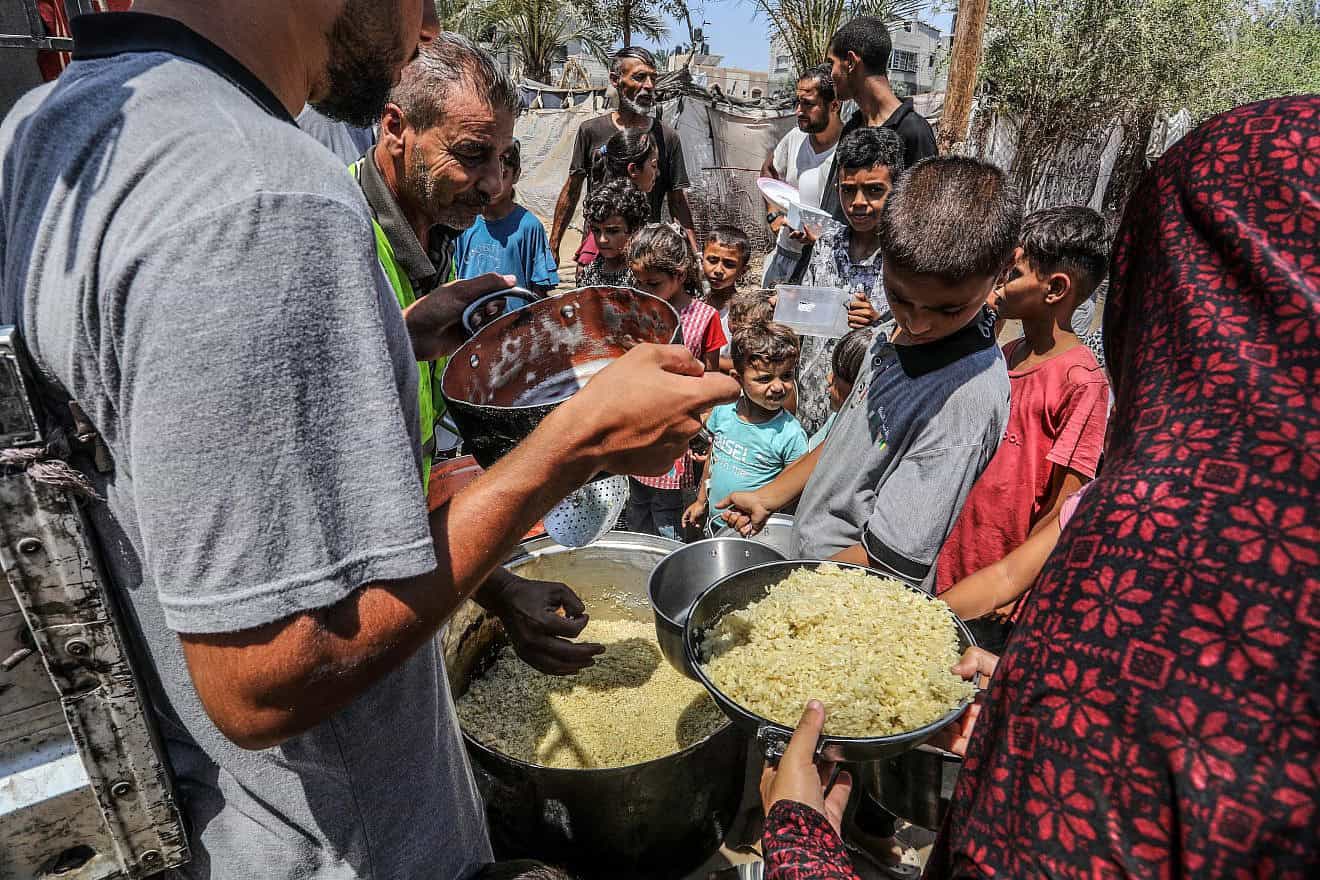by JNS Staff
The latest report by the Integrated Food Security Phase Classification introduced a new malnutrition measure, which it has not traditionally used for such determinations.

The U.N.-affiliated Integrated Food Security Phase Classification (IPC) recently declared a “worst-case scenario of famine” in Gaza, though quietly adjusted one of its core measurement standards in the process, making it easier to issue such a designation, reported The Washington Free Beacon on Tuesday.
In its July 29 assessment, the IPC—a coalition of Western governments, U.N. agencies, and humanitarian groups—reported that “mounting evidence shows that widespread starvation, malnutrition and disease are driving a rise in hunger-related deaths” in the Hamas-controlled territory.
The New York Times, NPR, CNN and ABC News cited the report to link Israeli aid restrictions to mass starvation.
Unlike past evaluations, the IPC’s latest report introduced a new malnutrition measure—the mid-upper arm circumference (MUAC)—which it has not traditionally used for famine determinations, the Free Beacon discovered.
The IPC also halved the percentage threshold of children suffering malnutrition that is necessary to establish a famine determination to 15%. Historically, famine has been declared when 30% of children suffer acute malnutrition, measured by weight and height calculations, a more labor-intensive and precise method than MUAC, which involves a simple arm measurement.
The revised criteria appeared only in a small note with an asterisk beneath a chart titled “When is Famine Classified?” and were not mentioned in the IPC’s official “Famine Fact Sheet.”
The organization’s technical manual lists MUAC as a supplementary data point, not a primary basis for famine classification. The manual underscores that the IPC can only provide a “famine classification” once it has “reliable data” using weight and height measurements, or one other metric that is not MUAC.
The change has raised concerns among veteran aid workers. “It’s a pretty big shift in standards,” one of them told the Free Beacon. “Lowering the bar makes it easier for a famine determination to be made.” Another noted that past famine declarations in Somalia, South Sudan and Sudan relied on the higher 30% weight-for-height benchmark.
In Gaza, the IPC’s MUAC-based findings show acute malnutrition is under 8% for children in Deir al-Balah and Khan Younis, and 16.5% in Gaza City—just above the new 15% threshold but far below the previous 30% standard.
The July report also cited “over 20,000 children” treated for acute malnutrition between April and mid-July, including more than 3,000 severely malnourished, and at least 16 recent hunger-related child deaths. However, these figures were drawn from “internal documents” that are not publicly available.
Much of the IPC’s data comes from the Hamas-run Gaza Health Ministry and affiliated organizations, including Ard el Insan, an aid group, which has faced allegations of ties to the militant group, the Free Beacon noted.
The IPC did not respond to the Free Beacon’s questions regarding its altered methodology or the reliability of its sources.
JNS Staff
Source: https://www.jns.org/un-watchdog-altered-key-metric-lowering-bar-to-declare-gaza-famine/
No comments:
Post a Comment